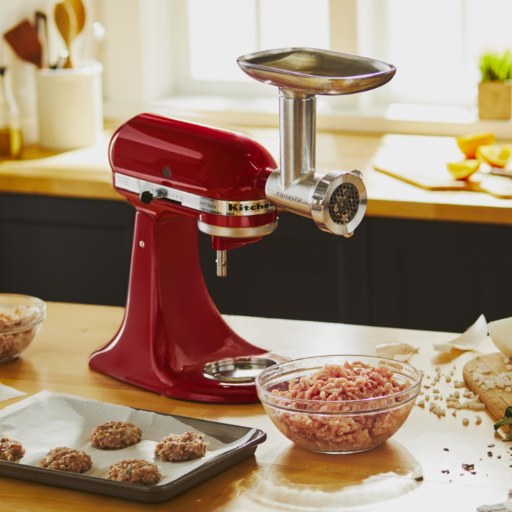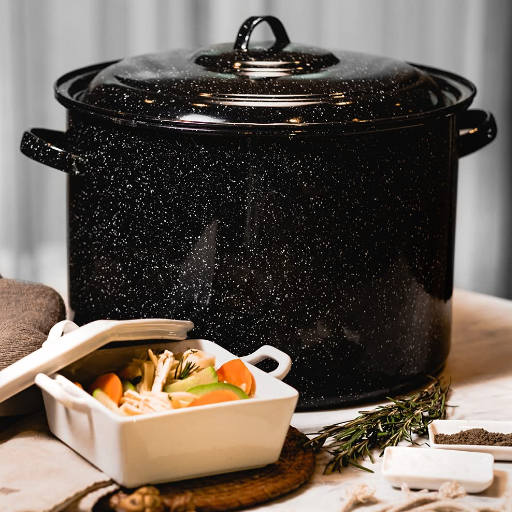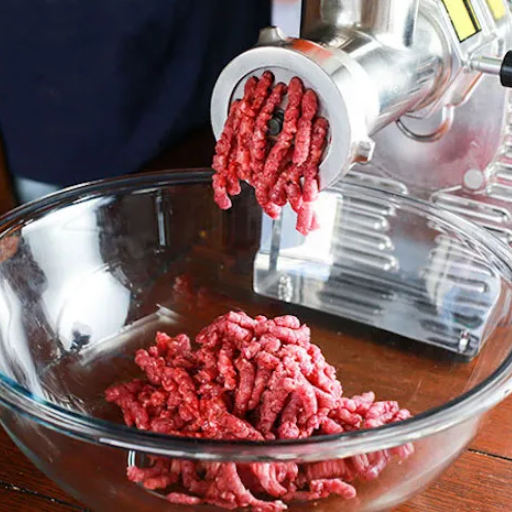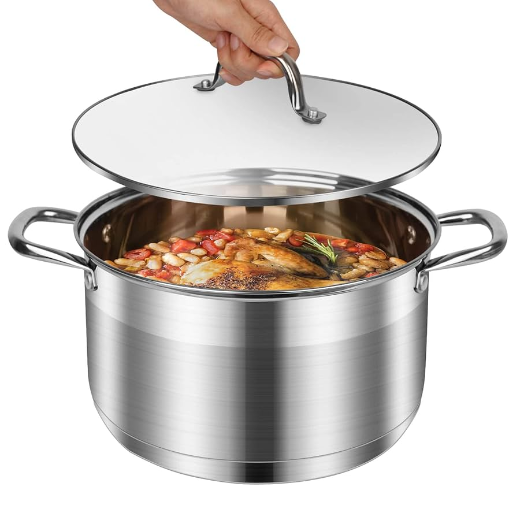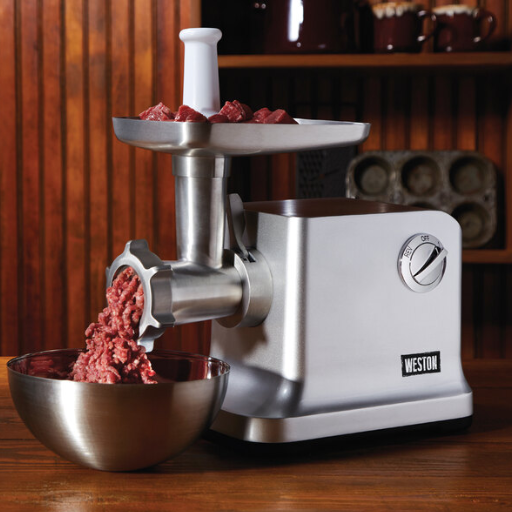Preparing meals in remote settings or while traveling can be a huge challenge. Properly used, a butane gas stove presents unparalleled ease and versatility. The purpose of this article is directed towards achieving mastery on the use of a butane gas stove, from cooking gourmet food on a campsite stove to a quick meal at home. We highlight important safety measures and practical cooking options to put this portable cooker into good use. We also ensure that a maximum range of culinary activities, efficiency, and enjoyment is rendered. By the end of this article, it is our aim that readers do not shy away from culinary challenges.
How Do You Safely Use a Butane Gas Stove?

When using a butane gas stove, ensure you have proper ventilation in your cooking area so gas cannot build up. As a precaution, always check the stove along with the gas canister prior to use; make sure they are not damaged and that there aren’t leaks. Follow the instructions of the manufacturer to carefully attach the gas canister, and ignite the stove away from anything that is flammable. Control the flame and make sure to never walk away from the stove while it is in operation. Once cooking finishes, ensure the gas is turned off and the canister is removed so that it can be safely stored.
Understanding the Basics of Butane and Its Safety Features
butane’s use as a fuel in portable stoves, heaters, and lighters demonstrates versatility and efficiency. Its clean burn makes it appealing to outdoor enthusiasts and homemakers alike. However, safety procedures need to be followed when working with butane. One of its major safety benefits is that it can be kept in a liquid state under moderate pressure, which makes storage and transportation easier. Furthermore, modern-day butane appliances have added safety features like pressure release valves to avert potential accidents. To properly handle butane, regular equipment checks along with a good understanding of the provided safety features are crucial.
Setting Up Your Butane Stove for First-Time Use
For first-time use of your butane stove, begin by checking that the area is well ventilated and safe from any flammable objects. Prior to use, ensure that the stove and butane canister are not damaged or defective. Attach the butane canister onto the stove per the instructions provided by the manufacturer, aligning the connector to the canister. Following interlocking the butane canister, please turn the gas knob to the ignition setting. Ignite the stove with the automatic igniter or use a lighter if needed. Do not forget to follow the user manual for specifics and remember that safety comes first.
Tips for Maintaining Your Butane Gas Stove
I suggest a few simple practices to maintain your butane gas stove in tip-top shape. First, scrub the burner and the area surrounding it to avoid obstruction due to food remnants or clutter after every use. This will also keep the flame ports clear. Inspect the gas connector and seals frequently to check for any wear or damage as they are essential for leak prevention. Keep your stove and butane canisters in a cool, dry place, free from direct sunlight and heat, for safety and maintenance of longevity. Test the function of the stove from time to time and refer to the manufacturer’s guide in case any issues come up. Butane gas stoves can be kept safe and efficient with proper care while extending their lifespan.
What are the Benefits of Cooking with a Butane Torch?
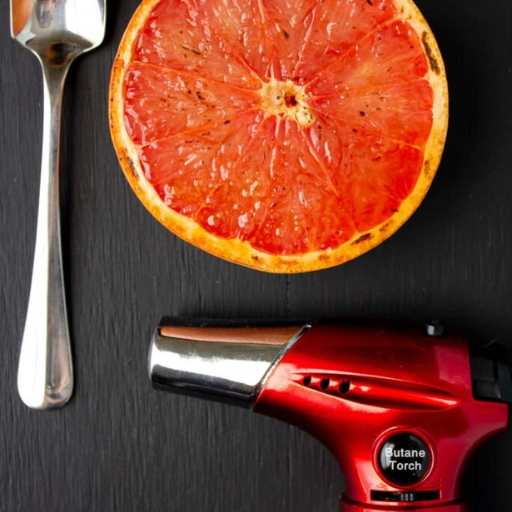
What makes cooking with a butane torch interesting is its use in high-level culinary practices as well as caramelizing sugar on pastries, searing proteins, or giving vegetables a charred finish. It does these activities exceptionally well due to a near laser-like level of precision and control over the application of heat. Cooks are able to focus the flame towards one specific point, which makes the application of a butane torch different from standard cooking torches and enables reliable results without damage to taste or textures. It’s no wonder that both amateur and professional chefs appreciate the versatility of a butane torch when it comes to artistry in the kitchen. It appeals to creative instincts and takes aesthetics a step further.
Using a Butane Torch for Perfect Crème Brûlée
The process of getting the crème brûlée just right with a butane torch is easier than you would think; I will guide you on how to get that oh-so-delicious caramelized top. First and foremost, it is crucial that you set and chill your custard before using the torch. This guarantees that only the sugar layer is impacted while the dessert underneath remains unharmed.
Here are the important parameters to consider:
- Even Sugar Layer – To start off, granulated sugar should be uniformly spread on top of the custard. If the layer of sugar is too thin, the caramel crust will not form properly, and if too thick, will burn. My advice is to use 1-2 teaspoons per ramekin and to spread it evenly over the surface.
- Torch Position and Flame Intensity –Sugar is best not to be torched with a flame higher than 2-3 inches, hovering above it with a butane torch. At that distance a moderate flame can be applied without scorching the sugar. The sugar needs to be able to melt without scorching, that means controlled gentle application is vital.
- Movement –By moving the torch in small circular motions rather than focusing on one spot for too long melts and caramelizes sugar evenly into a buttery golden brown layer.
- Cooling the Crust – Let the sugar crust cool for 1-2 minutes after it has been caramelized, this allows it to solidify which provides the satisfying crack when broken with a spoon.
Using these suggestions, you will have a silky custard beneath a shimmering, caramel-glass top. A butane torch allows you to control the caramelization process, ensuring a perfect balance with every use.
Achieving the Ideal Flame for Various Culinary Techniques
obtaining the right flame for different cooking techniques takes some level of refinement and skill. When it comes to more delicate operations like caramelizing crème brûlée, I prefer the use of a small torch flame since it gives me better control and keeps me from over burning. When charring veggies or searing meats, a broader and slightly stronger flame works best for that perfect smoky taste without overcooking the insides. Of primary concern is that there is sufficient safety and uniform heating for the dish corresponding to the technique employed. With a bit of imagination alongside proper safety precautions, you can accomplish restaurant mastery quite easily. Understanding the tools being deployed is crucial to achieving professional-grade outcomes on a consistent basis.
How a Butane Torch Enhances Your Culinary Skills
Your culinary abilities are elevated to the next level with a butane torch, primarily due to the precision, versatility, and efficiency it provides. You can achieve tailored effects such as sugar caramelization, ideal meringue browning, and flawless meat sizzling, all balanced in taste and appeal. It embodies the top most standards in cooking. A butane torch’s skillful application of focused heat eliminates the tedium from intricate methods while fostering innovative approaches to cooking.
What Types of Butane Canisters are Available?

With regard to butane canisters, there are a few primary types with different applications and features: From my experience, I mostly deal with standard butane canisters intended for handheld torches. They are compact, easy to wield, and accessible, making them sufficient for most culinary tasks. There are also larger, premium-grade canisters that claim to contain purified butane. These larger canisters offer a cleaner burn and decreased levels of impurities, which are sometimes required for rather niche professional applications. Lastly, some of these canisters are designed to fit tools with universal nozzles, allowing them to be used across various devices. Each user’s requirements will determine which canister is ideal, but for me, the most sought qualities tend to be versatility and quality.
Exploring Different Sizes: From 8oz Butane to Larger Options
Regarding the dimensions of butane canisters, it always boils down to a matter of size matching your needs. 8 oz butane canisters are portable and multifunctional as they fit on camping stoves, small torches, or other one-off tasks that require butane. For those needing sustained usage or higher performance, larger canisters, commonly used in commercial kitchens or even industrial settings, offer unmatched capacity and fuel efficiency. The choice needs to consider a tradeoff between convenience, use frequency, and expected performance metrics.
Choosing the Right Butane Fuel Canister for Your Needs
choosing the best butane fuel canister is a matter of knowing the requirements of your task and your surroundings. If it is outdoor activities or working with smaller tasks, nothing beats the portability provided by an 8oz canister. When heading outdoors, it is sufficiently compact, easy to carry, and meets the demands of short-term use. On the other hand, for sustained and more demanding tasks like cooking professionally, a larger canister is more convenient so as not to restrict performance mid task and does improve efficiency over time. For me, it is resolved about how portable the canister is versus the performance that meets both immediate needs and long term convenience.
Storage Tips for Butane Canisters
When storing butane canisters, ensuring maximum safety measures is a must. Safety demands containment away from direct sun exposure, open flames, or any form of heat. It also should be at the right temperature; neither too dry, cool, or warm, while still being ventilated. Ensure the location where the canisters are to be stored is stable enough so they do not tip over and keep them away from confined spaces like the truck of a car, as those areas have the potential for dangerously increasing temperatures. In addition, be sure to examine manufacturer’s guidelines on the specific storage tips provided. Such guidelines should be checked alongside visually inspecting the canisters for any possible damage or leaks. Proper storage guarantees not only a longer lifespan for products, but also safe usage each and every time.
How Does a Portable Butane Gas Stove Compare to Other Camping Options?

butane gas stoves are the most convenient and efficient of all the camping options available. Their weight and size make them easy to transport, unlike other stoves which are heavier and bulkier. Butane stoves are cleaner when it comes to fuel and flame control, this makes it easier to cope with a range of meals. On the contrary, I do think that butane stoves may not be as effective at lower temperatures and higher altitudes because of the lower pressure of butane. However, for most casual camping trips, a portable butane stove is the portable solution for easy setup and uncomplicated operation.
Portable Butane vs. Propane: Which is Better for Cooking?
Whether for portable butane or propane gas for cooking, the selection mostly relies on your needs and surrounding environment. The cleanliness of butane and its canisters make it highly effective in the case of cooking indoors or during outdoor fair weather activities. On the other hand, propane outshines butane during extremely cold weather conditions and high altitudes, as it tends to be consistent in pressure and performance. For nearly every other application, propane is the preferred option; however, the ease of use provided by butane for light trips is hard to argue with.
Advantages of a Portable Camping Stove
In my view, the benefits of a portable camping stove are unquestionable. A camping enthusiast would certainly agree that these small appliances can be very helpful. As a novice camper, I can tell you that the pros are abundant, and I am here to share them with you:
- Convenience and Portability
Camping stoves are made for the go as they can easily fit into your backpack or car due to their lightweight and small size. Their construction allows you to set up and prepare within minutes without needing to build a fire or scout for a cooking area. This is certainly a plus for those looking for ease and efficiency.
- Time-Saving
Unlike traditional fire pits, portable stoves cook food in no time as they heat up quickly and evenly. This serves well during busy hiking days or when you want a quick bite to eat.
- Fuel Efficiency
Regardless of whether it’s butane, propane, or mixed fuel, most portable stoves are optimized to use fuel efficiently. This cuts the amount of fuel you need to carry, and reduces waste making it more environmentally friendly.
- Versatility
You can do more with a portable camping stove than boiling water. Depending on the model and accessories you can prepare a variety of meals from soups to stir-fries. Many stoves come equipped with foood heat control as well enabling you to prepare food to your exact specifications.
- Safety and Control
Camping stoves have safety features integrated into their design. Compared to open-flame fires, they provide a stable surface for cooking and contain flames, considerably diminishing the likelihood of accidents. The safety of users is enhanced by features such as windshields and ignition systems.
- Environmental Friendliness
The use of a portable stove significantly lessens your contribution to environmental degradation. It does not require the collection of firewood, which disrupts the ecosystem and leads to the creation of barren, charred lands. Portable stoves encourage people to observe the “Leave No Trace” principles.
Understanding these benefits, you can appreciate why portable camping stoves have become essentials for those who enjoy the great outdoors. They are dependable, effective, and enhance the experience of cooking in the wild, making it enjoyable rather than stressful. In my view, these are indispensable for every camper!
Considerations When Packing a Portable Butane Gas Stove
Proper safety and preparedness are essential when packing a portable butane gas stove. First, I make sure to clean the stove; a quick inspection should tell me if there are leaks or blockages in the connections. I also check that I have enough butane canisters for the trip, storing them in a cool, dry place to avoid damage. Because space is an issue, I place the stove in a protective case to avoid scratches and dents during transport. Additionally, I always plan for proper ventilation and pack a small fireproof mat to use as a base for a stove for added safety. These precautions ensure my outdoor cooking experience is smooth and enjoyable.
How to Properly Refill and Maintain a Butane Torch?

It is best to refill a butane torch in an area with good ventilation, ensuring that there are no open flames nearby. The torch should also be off and completely cooled prior to refilling. For the refill, the torch is held upside down and the nozzle of the butane canister is placed into the refill valve. While holding it in place, pressure should be applied for several seconds until the torch is full. The torch must then stand for a few minutes to let the gas stabilize before use. For maintenance purposes, the nozzle needs to be unclogged with a soft bristle brush and the torch should be checked for wear and damage on a regular basis. To prevent potential hazards, the torch should always be stored in dry, cool places, with the nozzle facing upwards, which also helps prolong its lifespan.
Steps to Refill Your Butane Torch Safely
My extensive experience with using butane torches has shown that precision and safety are the top priorities when it comes to maintenance and refilling. Here’s how I handle the process personally:
- Choose the Right Environment – I make sure the location is open and has good air circulation, as well as no flames or extreme head nearby. This helps in preventing fires and maintains safety.
- Cool Down the Torch – My first step is to make sure the torch is cold. Pouring more fuel into a warm torch is a safety hazard, so I do not miss this step.
- Position the Torch Properly -To guarantee that air pockets do not form in the fuel chamber, I turn the torch upside down, which helps it operate efficiently later on.
- Insert the Butane Canister – Now I take the butane canister, using fingers, align the butane’s nozzle over the torch’s refill valve and press down. I apply constant even pressure for approximately 5 to 10 seconds depending on the size of the fuel tank.
- Wait and Inspect – After refilling it, I like to give the torch some time to allow the fuel to settle and check for any possible leaks. If everything checks out, then I know the torch functions as expected.
Ensuring Longevity and Efficiency of Your Butane Torch
To keep my butane torch operating optimally, I perform maintenance regularly. After using it, I wipe the nozzle clean of any dirt or residue to prevent clogging and ensure a steady flame. I also cleanse the torch periodically by venting any old fuel and excess air from the chamber prior to filling it up. This endeavor aids in maximizing fuel economy while mitigating performance degrading concerns. Furthermore, I keep the torch in a cool and dry environment, away from direct sunlight or heat, which helps keep the butane and torch parts safe from degrading. Following these simple yet profound practices allows the torch to remain functional and efficient long term.
Reference:
- 7 Tips To Make Your Coleman Butane Gas Experience Ultimate – Offers practical tips for optimizing the use of Coleman butane gas appliances.
- How to Use Butane Fuel Operated Camp Stoves – A detailed guide on safety and best practices for using butane stoves.
- Portable Butane Stove Safety | Safety Note – Highlights safety precautions and potential risks associated with portable butane stoves.
Frequently Asked Questions (FAQs)
Q: How do I properly use a butane gas stove for cooking?
A: To properly use a butane gas stove, ensure that the butane gas canister is securely attached to the stove. Always check for leaks before lighting. Adjust the stove burner to the desired flame level for optimal cooking time. Remember, using butane gas is safe when you follow the manufacturer’s instructions.
Q: What is a kitchen torch, and how is it different from a butane gas stove?
A: A kitchen torch, also known as a culinary torch, is a handheld device used for browning, caramelizing, and applying direct heat to food. Unlike a butane gas stove, which is used for general cooking, the butane kitchen torch targets small areas with precision.
Q: Can I use a butane gas stove indoors?
A: Yes, you can use a butane gas stove indoors, but it’s best to ensure proper ventilation to avoid the accumulation of flammable gas. Always follow safety guidelines and use the stove in well-ventilated areas.
Q: How do I know when to replace the butane gas canister?
A: Replace the butane gas canister when the flame on the stove burner weakens or if the burn time is significantly reduced. Having enough fuel on hand ensures uninterrupted cooking, whether you’re at home or on a culinary adventure.
Q: What are the benefits of using a portable gas stove for camping?
A: A portable gas stove is a versatile tool for camping, providing a reliable cooking companion. It offers the convenience of a compact design, easy transportation with a carry bag, and enough fuel capacity for extended trips. It’s ideal for both indoor and outdoor use.
Q: How does a gas torch kit enhance cooking?
A: A gas torch kit takes your cooking to the next level by allowing precise control over heat application. It’s perfect for tasks like searing meats, melting cheese, or creating a crispy topping on desserts. The torch kit is a must-have for any culinary enthusiast.
Q: What safety precautions should I take when using a butane gas stove?
A: When using a butane gas stove, always check that the gas cartridge or cylinder is UL listed and securely attached to the stove. Avoid placing the stove near flammable materials. If you’re looking to cook with it indoors, ensure proper ventilation and never leave the stove unattended while in use.
Q: Can I use other fuel sources with my portable butane stove?
A: Some stoves are designed as dual fuel systems, meaning they can use both butane and propane tanks. However, always check the manufacturer’s instructions to ensure compatibility and safe use with alternative fuels.
Q: What cookware is best for a butane gas stove?
A: When using a butane gas stove, it’s best to use cookware that evenly distributes heat, such as cast iron or stainless steel. These materials work well with the concentrated heat of a stove burner, ensuring efficient cooking.
Q: How do I maintain my butane gas stove for longevity?
A: To maintain your butane gas stove, regularly clean the stove burner and windscreen to prevent clogs and ensure even gas flow. Store the stove and gas canisters in a cool, dry place, and inspect the stove and attachments for wear and tear before each use.

